Chondrosarcoma: with updates on molecular genetics
- PMID: 21403832
- PMCID: PMC3042668
- DOI: 10.1155/2011/405437
Chondrosarcoma: with updates on molecular genetics
Abstract
Chondrosarcoma (CHS) is a malignant cartilage-forming tumor and usually occurs within the medullary canal of long bones and pelvic bones. Based on the morphologic feature alone, a correct diangosis of CHS may be difficult, Therefore, correlation of radiological and clinicopathological features is mandatory in the diagnosis of CHS. The prognosis of CHS is closely related to histologic grading, however, histologic grading may be subjective with high inter-observer variability. In this paper, we present histologic grading system and clinicopathological and radiological findings of conventional CHS. Subtypes of CHSs, such as dedifferentiated, mesenchymal, and clear cell CHSs are also presented. In addition, we introduce updated cytogenetic and molecular genetic findings to expand our understanding of CHS biology. New markers of cell differentiation, proliferation, and cell signaling might offer important therapeutic and prognostic information in near future.
Figures
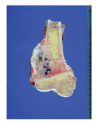
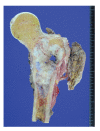
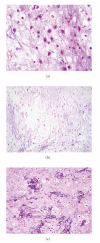




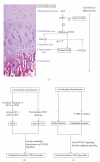


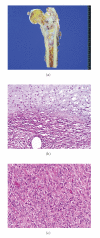
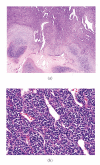

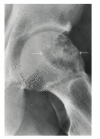


References
-
- Fletcher CDM, Unni KK, Mertens F. World Health Organization Classification of Tumors: Pathology and Genetics of Tumors of Soft Tissue and Bone. Lyon, France: IARC Press; 2002.
-
- Jemal A, Siegel R, Ward E, et al. Cancer statistics, 2006. Ca: A Cancer Journal for Clinicians. 2006;56(2):106–130. - PubMed
-
- Murphey MD, Walker EA, Wilson AJ, Kransdorf MJ, Temple HT, Gannon FH. From the archives of the AFIP: imaging of primary chondrosarcoma: radiologic-pathologic correlation. Radiographics. 2003;23(5):1245–1278. - PubMed
-
- Giuffrida AY, Burgueno JE, Koniaris LG, Gutierrez JC, Duncan R, Scully SP. Chondrosarcoma in the United States (1973 to 2003): an analysis of 2890 cases from the SEER database. Journal of Bone and Joint Surgery. American. 2009;91(5):1063–1072. - PubMed
-
- Murphey MD, Flemming DJ, Boyea SR, Bojescul JA, Sweet DE, Temple HT. Enchondroma versus chondrosarcoma in the appendicular skeleton: differentiating features. Radiographics. 1998;18(5):1213–1237. - PubMed
LinkOut - more resources
Full Text Sources

